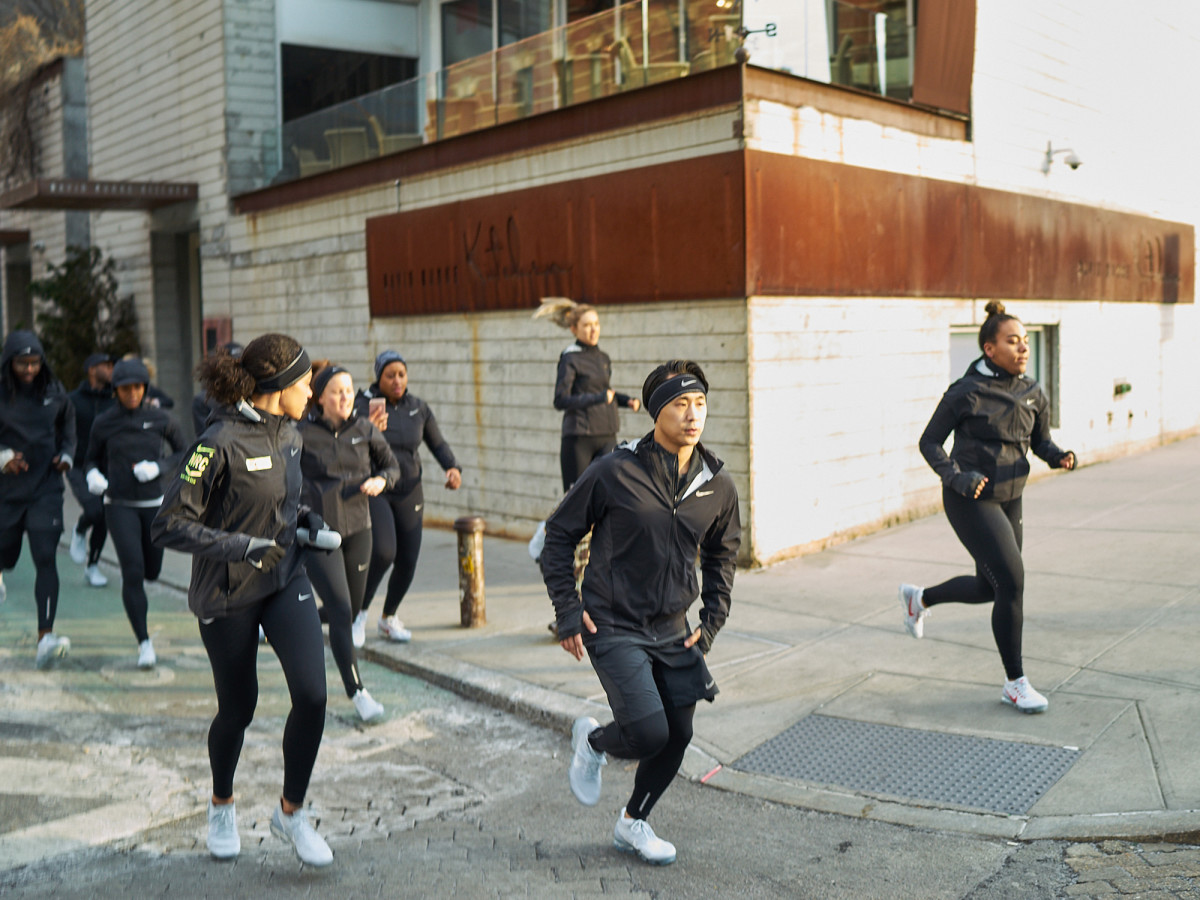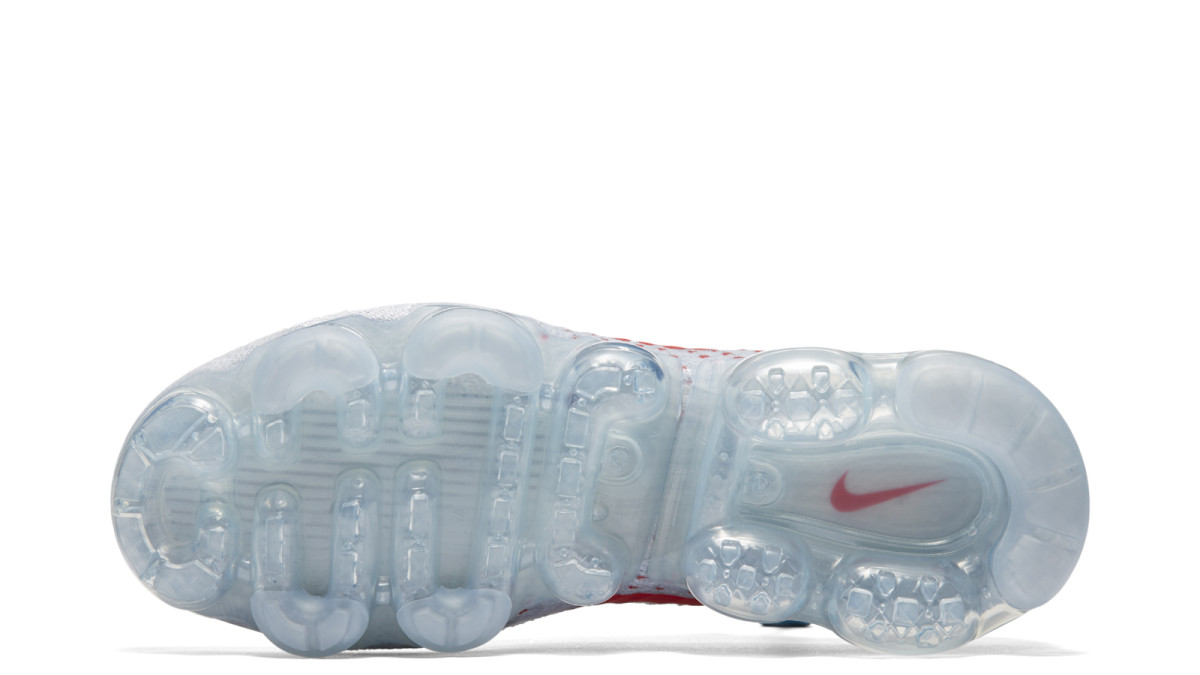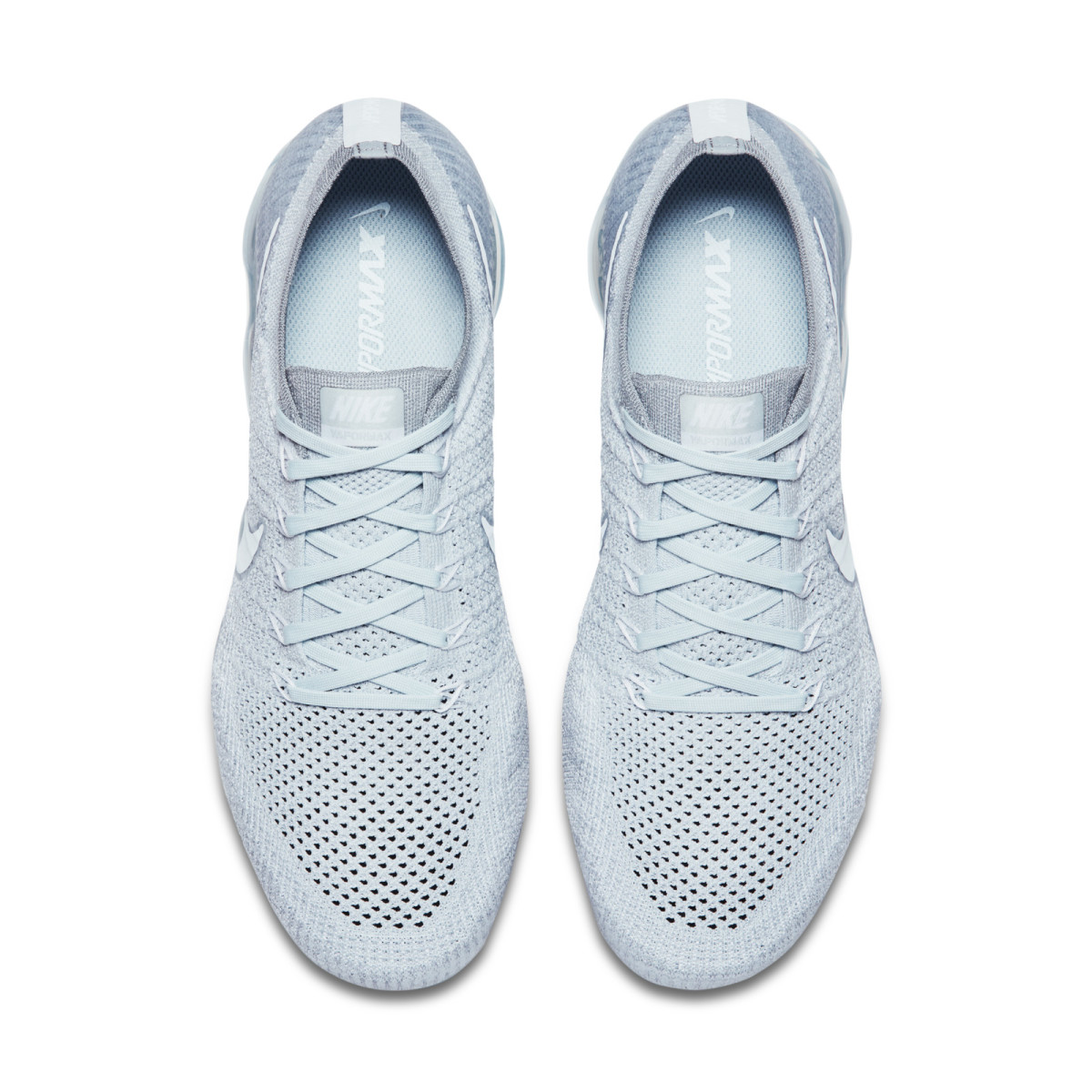Nike Air VaporMax flyknit running shoe review

Nike's latest and greatest sneaker, the Nike Air VaporMax, will release this weekend on Saturday, March 26, on "Air Max Day," as Nike has dubbed the day in celebration of the 30th anniversary of the Air Max 1. The high-tech Nike Air VaporMax (available at nike.com on March 26, $190) is the product of about seven years of work and it is unquestionably one of the most anticipated shoe releases this year. After testing out the shoe for the first time during a 5K run with a group of fitness editors in New York City last week and having run in them for well over 40 miles since then, we can confirm that the VaporMax is a marvel of engineering, and it certainly gets our vote as the best looking new silhouette.
There are a couple of notable innovations with the VaporMax: it’s the lightest and most flexible Air Max, it combines a Flyknit upper with a full-length Air unit and it’s the lightest Air Max running shoe ever. What does this all mean?

"Formfitting" is often the term used describe a lot of the knit uppers that have become all the rage in the shoe industry, but it couldn’t be more true here. The VaporMax is the closest you’ll find to getting that sock-like fit around your feet. Compared to some other models that use Nike’s Flyknit uppers, the VaporMax shed a lot of layers and the Flyknit here is about as thin as you can get. The Flywire cabling—those small stitches that run down along the side of your foot—helps to really envelope the Flyknit upper around the shape of your feet, and they are incredibly comfortable to wear. (One sizing tip: If you have wide feet, you should consider sizing up, as this skews toward a more narrow fit.)
The Best Women's Running Shoes 2018
We need to be very clear here: the VaporMax require some breaking in before you will feel comfortable running in them. The full-length Air sole unit is unlike anything we’ve ever run in before—the entire sole is filled with air and thus, it's completely see through. The traditional foam midsole cushioning you find in most running shoes is not present here and your feet sit directly on top of the Air sole. As expected, the full-length Air sole has a lot of bounce to them, but it's a little firmer than you would expect. The Air sole was created to flex with the natural motion of your foot, and you will notice that certain areas have more cushioning. These seem to be ideal for mid-foot strikers, as the impact feels more evenly distributed while running. There is a noticeable amount of extra cushioning in the heel area, so heel strikers are covered here as well.

If you need any extra ankle or heel support, you won’t find much here as the upper is about as minimal as it gets. But we found the VaporMax to be very stable to run in at all speeds and on different surfaces. However, if you are a severe under or overpronator, they may not provide the stability that you need to run. We wouldn’t attempt to run a marathon in these shoes, but would have no reservations about using them in a shorter race such as a 10K.
When hitting pavement for the first time, you’ll feel the sole grip the ground as you run thanks to the TPU lugs integrated into the bottom of the Air sole. It’s a unique sensation that felt a little odd at first, but you’ll get used to it after running a few miles in them. The VaporMax shines on a track surface, and it offers better traction than any other shoe we’ve ever tested. If you run on a lot of tough surfaces or in less than favorable conditions, the incredible traction could be particularly helpful for you.

We do have some concerns over the durability of the Air sole, but so far they’ve stood up to the pounding of concrete and pavement. Nike integrated rubber pods into high impact areas (mainly in the heel and in the forefoot area) of the shoe to help with durability. Kathy Gomez, Nike’s vice president of innovation, claims that it’s more durable than the typical rubber outsoles used in most running shoes. Gomez also told us that they had 350 testers run a combined 126,000 miles in these shoes, which averages out to 360 miles per shoe.
When it was released in 1987, the Air Max technology was innovative. During the month of March, Nike has released a variety of Air Max shoes but even those special shoes were just a lead-up to the VaporMax release on March 26. At its most basic, the VaporMax is essentially just a full-length Air sole and a Flyknit upper. Nike managed to get the VaporMax down to about 8.5 oz, and it is incredibly light and bouncy. The designers and engineers at Nike set out to create a shoe that was like walking on air, and while they didn’t completely hit that mark, they largely succeeded with the VaporMax.
